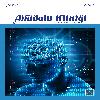Katılma Nöbetleri: Etiyolojik Faktörler, Laboratuvar Bulguları ve Demir Tedavisine Yanıt Oranları
katılma nöbetleri, demir desteği, elektroensefalografi
Breath-holding Spells: Etiological Factors, Laboratory Findings, and Rates of Response to Iron Therapy
___
- Evans OB. Breath-holding spells. Pediatr Ann. 1997;26(7):410–4.
- DiMario FJ. Prospective study of children with cya¬notic and pallid breath-holding spells. Pediatrics. 2001;107(2):265–9.
- Carman KB, Ekici A, Yimenicioglu S, Arslantas D, Ya¬kut A. Breath holding spells: point prevalence and as¬sociated factors among Turkish children. Pediatr Int. 2013;55(3):328–31.
- Goraya JS, Virdi VS. Persistence of breath-holding spells into late childhood. J Child Neurol. 2001;16(9):697–8.
- Tomoum H, Habeeb N, Elagouza I, Mobarez H. Paediat¬ric breath-holding spells are associated with autonomic dysfunction and iron deficiency may play a role. Acta Paediatr. 2018;107(4):653–57.
- DiMario FJ, Burleson JA. Autonomic nervous system function in severe breath-holding spells. Pediatr Neurol. 1993;9(4):268–74.
- Vurucu S, Karaoglu A, Paksu SM, Oz O, Yaman H, Gul¬gun M, et al. Breath-holding spells may be associated with maturational delay in myelination of brain stem. J Clin Neurophysiol. 2014;31(1):99–101.
- Jain R, Omanakuttan D, Singh A, Jajoo M. Effect of iron supplementation in children with breath holding spells. J Paediatr Child Health. 2017;53(8):749–53.
- Worwood M. Indicators of the iron status of populations: ferritin. In: Assessing the Iron Status of Populations: Re¬port of a Joint World Health Organization/Centers for Disease Control and Prevention Technical Consultation on the Assessment of Iron Status at the Population Level, 2. ed. Geneva: World Health Organization; 2007:35–74.
- Gürbüz G, Perk P, Çokyaman T, Gürbüz ÖB. Iron sup¬plementation should be given in breath-holding spells regardless of anemia. Turk J Med Sci. 2019;49(1):230–7.
- Dai AI, Demiryürek AT. Effectiveness oral theophylline, piracetam, and iron treatments in children with simple breath-holding spells. J Child Neurol. 2020;35(1):25–30.
- Breukels MA, Plötz FB, van Nieuwenhuizen O, van Di¬emen-Steenvoorde JA. Breath holding spells in a 3-day-old neonate: an unusual early presentation in a family with a history of breath holding spells. Neuropediatrics. 2002;33(1):41–2.
- Hamed SA, Gad EF, Sherif TK. Iron deficiency and cyanotic breath-holding spells: the effectiveness of iron therapy. Pediatr Hematol Oncol. 2018;35(3):186–95.
- Yilmaz U, Doksoz O, Celik T, Akinci G, Mese T, Yilmaz TS. The value of neurologic and cardiologic assessment in breath holding spells. Pak J Med Sci. 2014;30(1):59–64.
- Silbert PL, Gubbay SS. Familial cyanotic breath-holding spells. J Paediatr Child Health. 1992;28(3):254–6.
- Olsen AL, Mathiasen R, Rasmussen NH, Knudsen FU. Long-term prognosis for children with breath-holding spells. Dan Med Bull. 2010;57(11):A4217.
- DiMario FJ, Sarfarazi M. Family pedigree analysis of children with severe breath-holding spells. J Pediatr. 1997;130(4):647–51.
- Robinson JA, Bos JM, Etheridge SP, Ackerman MJ. Breath holding spells in children with long QT syn¬drome. Congenit Heart Dis. 2015;10(4):354–61.
- Low NL, Gibbs EL, Gibbs FA. Electroencephalo¬graphic findings in breath holding spells. Pediatrics. 1955;15(5):595–9.
- Jain P, Gulati P, Morrison-Levy N, Yau I, Alsowat D, Ot¬subo H, et al. “Breath holding spells” in a child with SC¬N8A-related epilepsy: expanding the clinical spectrum. Seizure. 2019;65:129–30.
- Schmidt SH, Tedgård U, Pronk CJ. Breath-holding spells occur disproportionately more often in chil¬dren with transient erythroblastopenia. Acta Paediatr. 2016;105(9):1088–93.
- Sadek AA, Mohamed MM, Sharaf ZSA, Magdy RM, Al¬lam AA. Clinico-laboratory profile of breath-holding spells in children in Sohag University Hospital, Upper Egypt. Electron Physician. 2016;8(4):2227–31.
- Daoud AS, Batieha A, al-Sheyyab M, Abuekteish F, Hi¬jazi S. Effectiveness of iron therapy on breath-holding spells. J Pediatr. 1997;130(4):547–50.
- Bakoyiannis I, Gkioka E, Daskalopoulou A, Korou LM, Perrea D, Pergialiotis V. An explanation of the patho¬physiology of adverse neurodevelopmental outcomes in iron deficiency. Rev Neurosci. 2015;26(4):479–88.
- Masuda S, Okano M, Yamagishi K, Nagao M, Ueda M, Sasaki R. A novel site of erythropoietin production. Ox¬ygen-dependent production in cultured rat astrocytes. J Biol Chem. 1994;269(30):19488–93.
- Beard JL. Iron deficiency and neural development: an update. Arch Latinoam Nutr. 1999;49(3):34–9.
- Youdim MB, Yehuda S. The neurochemical basis of cognitive deficits induced by brain iron deficiency: in¬volvement of dopamine-opiate system. Cell Mol Biol. 2000;46(3):491–500.
- Lozoff B, Jimenez E, Hagen J, Mollen E, Wolf AW. Poorer behavioral and developmental outcome more than 10 years after treatment for iron deficiency in infancy. Pe¬diatrics. 2000;105(4):E51.
- ISSN: 2149-5254
- Yayın Aralığı: Yılda 3 Sayı
- Başlangıç: 1933
- Yayıncı: Hayat Sağlık ve Sosyal Hizmetler Vakfı
Sfenoid Sinüs Pnömatizasyonu Östaki Tüpü Açısını Etkiliyor mu?
Fakih Cihat ERAVCI, Gülsüm Kübra YILDIRIM, Prof.dr. Kürşat Murat ÖZCAN, Mustafa ÇOLAK, Selçuk PARLAK, Mehmet Fatih KARAKUŞ, Süleyman Emre KARAKURT, Aykut İKİNCİOĞULLARI, Haci Hüseyin DERE
Mustafa CANDEMİR, Mehmet Emin DEMİR, Burcu CANDEMİR, Serdar NURKOÇ
Miyeloproliferatif Hastalıkların Tanısının Moleküler Genetik Yönü: Polisitemi Vera Örneği
Svetlana MOLOTKOVA, Tatyana VOLK, Oksana GUREVİCH, Natalia DEKHNİCH, Krunal PANDAV
Katılma Nöbetleri: Etiyolojik Faktörler, Laboratuvar Bulguları ve Demir Tedavisine Yanıt Oranları
Fatma HANCI, Sevim TÜRAY, Ömer Faruk TIRINK, Nimet KABAKUŞ
Nihat AKBULUT, Özkan KARATAŞ, Hatice BALCİ YUCE, Sibel AKBULUT, Ahmet ALTAN, Mehmet TAŞKAN
Emine SAVRAN ELİBOL, Ece TURAN, Nejla TÜKENMEZ, Ahmet NOHUTÇU
Çocuklarda İnfluenza A ve B Enfeksiyonlarının Klinik ve Laboratuvar Özelliklerinin Karşılaştırılması
Hayrettin TEMEL, Mehmet GUNDUZ, Gokce KOPRULU, Sumeyye KARAMAN, Merve CELEBİ, Mehmet DOGAN, Ayse TOSUN, Mesut OKUR
Türkiye’nin COVID-19 Mücadelesinde Filyasyon: Kapsam, Bileşen ve Aşamaları
Melek Nur ASLAN, Abdullah UÇAR
Multipl Skleroz Tanılı ve Sağlıklı Kadınların Alt Üriner Sistem Semptomlarının Karşılaştırılması
Gözde TEKİN, Nuriye ÖZENGİN, Sule AYDIN TÜRKOĞLU, Handan ANKARALI, Yeşim BAKAR
Malignitede İnce Bağırsak Rezeksiyonu
Mehmet Fatih DAŞIRAN, Ahmet AKBAŞ, Hasan DAGMURA, Emin DALDAL, Faik Alev DERESOY, İsmail OKAN
